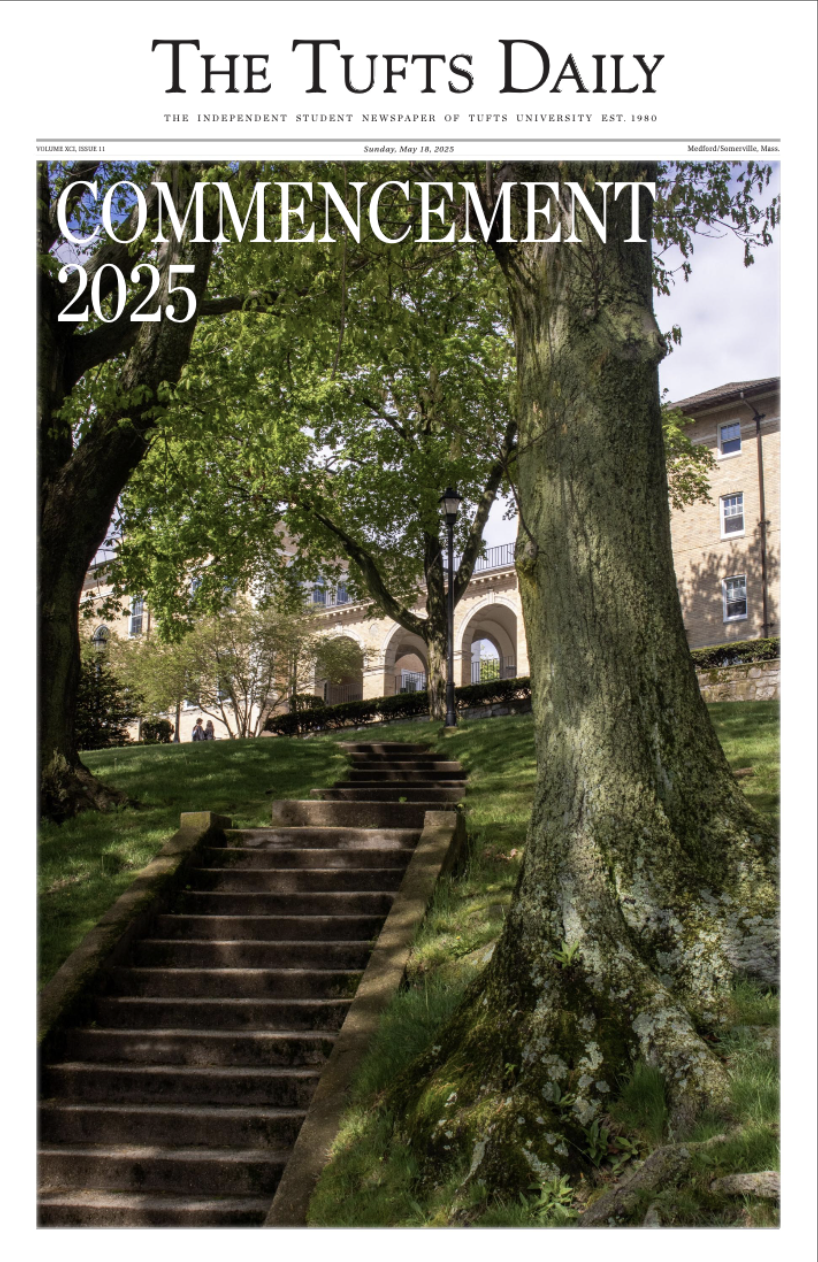Faculty lobbied for increased pay at last week's Arts and Sciences faculty meeting and presented numbers from a study showing that salaries for Tufts faculty members rank last among all Category I schools, universities offering a doctoral degree.
For the 2003-2004 academic year at Tufts, the most recent year numbers were available, professors received an average salary of $103,000 and associate professors took home an average of $77,300. The University paid assistant professors an average of $61,700, and instructors received $49,000.
In contrast, the salary for a professor at other private and independent Category I Institutions averages near $122,158. Tufts salaries rank lower than other private-independent schools in every teaching position except instructor.
When compared to other New England schools, Tufts falls behind. In 2003-2004, New England Category I Institutions paid their professors an average of $115,415 per year - $12,414 more than Tufts.
Academe Magazine, a publication of the American Association of University Professors (AAUP), released the data last March in its annual survey of professor salaries.
"Despite the claims of the administration that they are trying to make salaries more competitive, the overall pattern is not changing in a positive direction," Urban and Environment Policy and Planning Professor Sheldon Krimsky said.
Krimsky spoke at the Arts and Sciences faculty meeting earlier this month along with Economics Professor Jeffrey Zabel.
Aside from the data in Academe Magazine, Krimsky and Zabel presented numbers provided by Tufts' School of Veterinary Medicine, the School of Dental Medicine and the Fletcher School.
The study also examined the University in relation to institutions that have been identified as comparable to Tufts by University administrators and Trustees. These schools included Boston College, Brown University, Columbia University and Northwestern University
"I can't say what other schools have done to raise salaries, but it's clear our ranking has fallen," Zabel said. "The reality is we do not have the endowments that our peers have, and that puts us at a disadvantage in many respects."
At the faculty meeting University President Larry Bacow explained that some of the difference in salaries between Tufts and its peers occur through differences in accounting. Some schools, such as Dartmouth and Cornell, include salaries from their business and law schools in their aggregate figures. Such graduate schools pay professors very highly.
While Tufts' numbers also factor in its graduate schools, teachers at the Friedman School of Nutrition and the Fletcher School often work under short-term contracts, lessening their effect on the statistics.
The difficulty of receiving a promotion gives Tufts an unusually high number of associate professors in comparison to other schools, Krimsky said.
"At other places, [associate professors] will come up for professorship in a very short time, and the standards are not as high," he said. "At Tufts, however, it's a very arduous process to be promoted. It's basically the same as pursuing tenure."
As a result, 52 percent of Tufts' associate professors have remained in that same position for 10 years, and 20 percent have not been promoted for over 20 years.
Additionally, Krimsky and Zabel discovered that the salary gap between Arts and Sciences and Engineering has been steadily widening, with Engineering professors receiving higher pay on average.
In the 1993-1994 academic year, the average difference in salary between Arts and Sciences and Engineering professors was $9,700. By the 2003-2004 academic year, the gap had increased to $14,000.
"It creates problems at a university if a salary spread becomes too much. It's bad for morale. We're creating a dual class system," Krimsky said.
The presentation inspired a strong faculty and administrative response both at the meeting and afterward, including comments from Bacow. As the smallest Research I university in the country, the University's average salaries meet or exceed those at public research universities, but lag behind those at some of our larger, private competitors, Bacow said.
"The administration is devoting additional resources to close this gap ... We are committed to raising more resources to ensure that we can continue to recruit and retaining the very best faculty possible," Bacow said.
Krimsky and Zabel plan to meet with University Provost Jamshed Bharucha next month to discuss the administration's reactions to their presentation. Bacow also planned to present the issue to the University's Board of Trustees at their meeting this past weekend.
Zabel said he is impressed with Bacow's attention to detail.
"[Bacow has] clearly been thinking about this and understands the concerns of the faculty," he said. "The administration seems to be aware that salaries are not competitive with peer institutions. The question is where have we been, and where are we going?"





